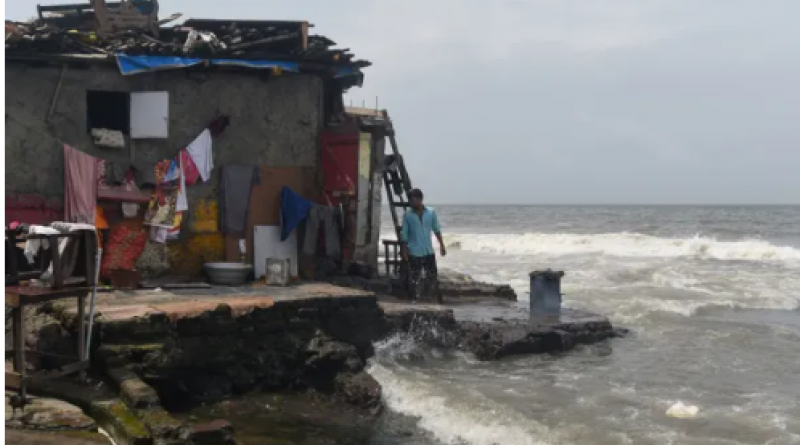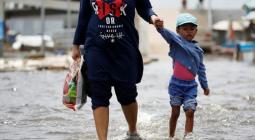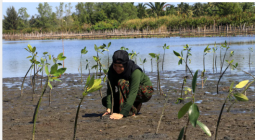Up to 410 million people at risk from sea level rises – study.

Majority of land at risk from a 1-metre sea level rise is in the tropics, research finds
Up to 410 million people will be living in areas less than 2 metres above sea level, and at risk from sea level rises, unless global emissions are reduced, according to a new study.
The paper, published in Nature Communications, finds that currently 267 million people worldwide live on land less than 2 metres above sea level. Using a remote sensing method called Lidar, which pulsates laser light across coastal areas to measure elevation on the Earth’s surface, the researchers predicted that by 2100, with a 1 metre sea level rise and zero population growth, that number could increase to 410 million people.
Their maps showed that 62% of the most at-risk land is concentrated in the tropics, with Indonesia having the largest extent of land at risk worldwide. These projections showed even more risk in the future, with 72% of the at-risk population in the tropics, and 59% in tropical Asia alone.
Dr Aljosja Hooijer, specialist water resources expert for Deltares, an independent institute for applied research in water and subsurface, and the lead author of the study, said while the research was inherently uncertain, more focus was needed on tropical regions for long-term flood preventions.
He said: “There’s a lot of scientists looking at long-term scenarios. But it’s happening now in parts of the world, and in these parts of the world, mostly in the tropics. And not just in south-east Asia, it’s also for instance in the Niger delta and Lagos.
“If you look at sea level rise, the impact research to date is mostly focused on defining sea level rise scenarios. There has been relatively little attention to elevation data, and that is simply because people didn’t feel much could be done about it, including ourselves for a long time.”
He was keen to stress that while this study was not a sea-level rise research project, the new elevation data model relied on accurate data, often not available in many parts of the world.
“In some countries like the Netherlands, or parts of the UK, and much of the US, they have excellent data for these coastal zones, because they fly Lidar every four years. It costs tens of millions of euros just to cover the Netherlands. Obviously in much of the world, people don’t have that kind of funding,” Hooijer said.
The climate emergency has caused sea levels to rise and more frequent and severe storms to occur, both of which increase flood risks in coastal environments.
Last year, a survey published by Climate and Atmospheric Science, which aggregated the views of 106 specialists, suggested coastal cities should prepare for rising sea levels that could reach as high as 5 metres by 2300, which could engulf areas home to hundreds of millions of people.
Maarten van Aalst, professor in climate and disaster resilience, and a contributing lead author to the Intergovernmental Panel on Climate Change (IPCC), said: “These numbers are another wake-up call about the immense number of people at risk in low-lying areas, particularly in vulnerable countries in the global South, where people are often experiencing these risks as part of a toxic mix with other risk factors, currently also including Covid-19.
“While risks have already been rising, we have made tremendous gains by better anticipating the hazards facing vulnerable populations, enabling effective evacuation, for instance reducing the lives lost to typhoons in Bangladesh from hundreds of thousands in the 1970s to about 120 in the case of supertyphoon Amphan last year.
“But those people still return to devastated livelihoods, and left more vulnerable to the next shock that is bound to hit soon. Looking at a wider set of risks we found that we could see a doubling of the people requiring humanitarian aid by 2050.”
Dr Sally Brown, deputy head of life and environmental sciences at Bournemouth University, said: “This research shows once again that many millions of people around the world are living in areas of flood risk. Sea-level rise increases the threat of flooding, which could have particularly severe impacts for communities and people’s livelihoods in developing nations.”
29 June 2021
The Guardian





